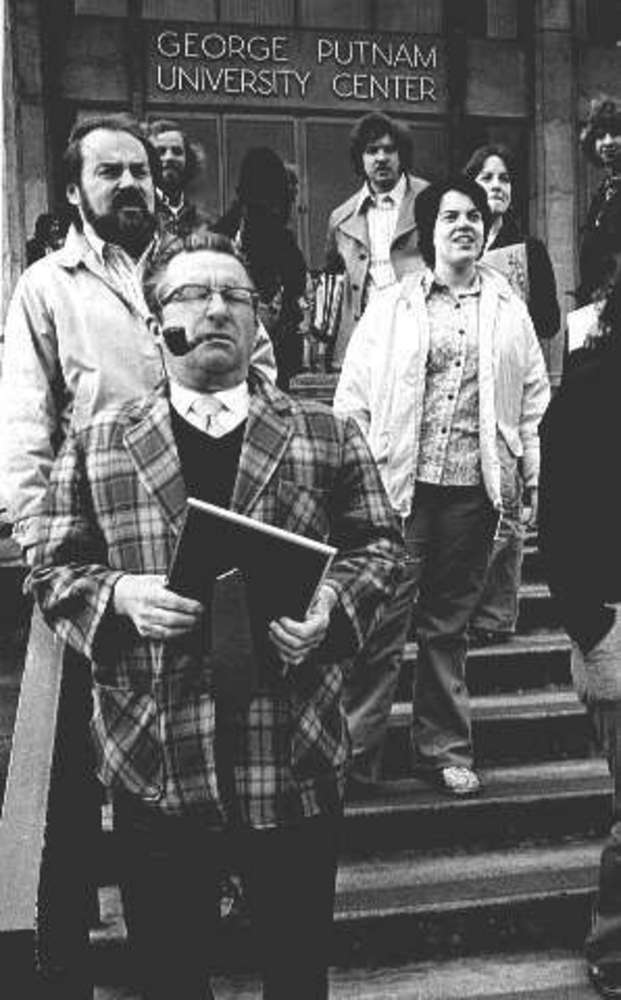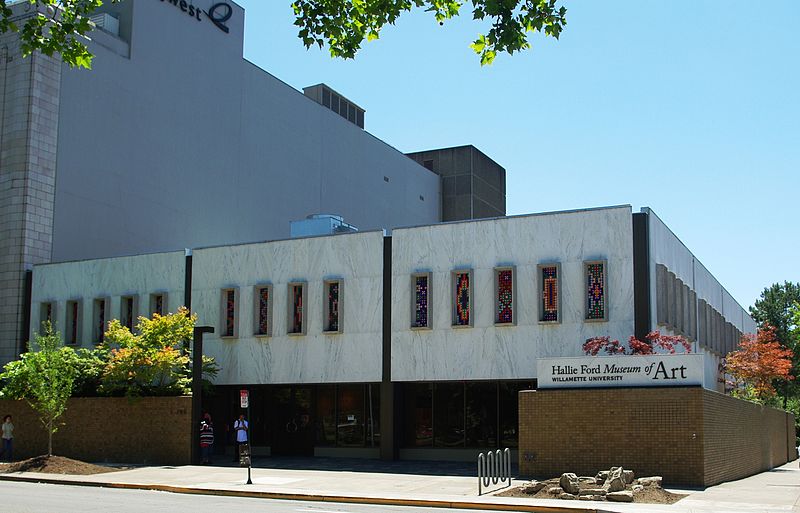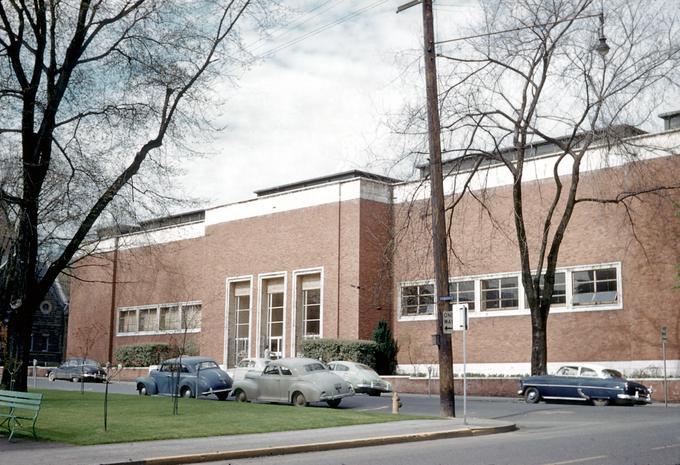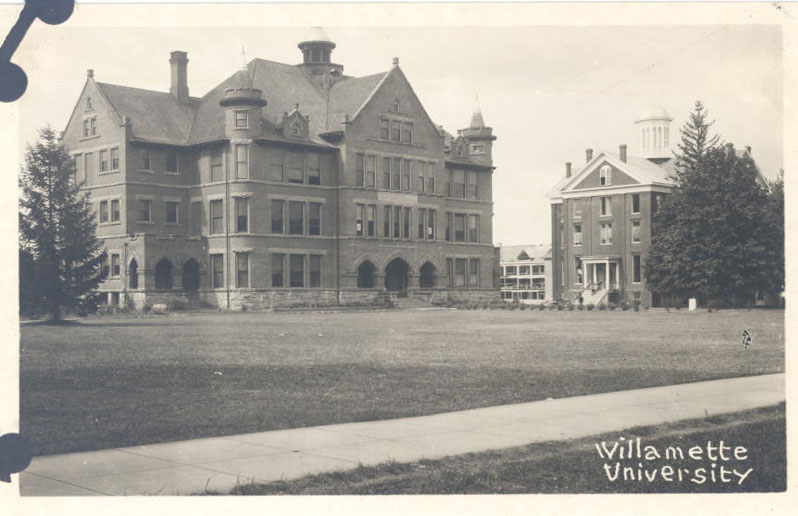Carl Hall was a Salem artist known for his paintings of the Willamette Valley, the Oregon coast, the female nude, and imagery inspired by the Northwest Coast Native culture he encountered on his trips to Alaska. Working in Oregon for fifty years, he created a large body of work that combines realism, surrealism, and romanticism in a style distinctly his own.
Hall was born in 1921 in Washington, D.C., and raised in Detroit as the oldest child in a large working-class family. His drawing skills attracted attention at an early age. While in high school, he was awarded a scholarship at the Meinzinger School, where the noted Havana-born painter Carlos Lopez (1908-1953) was on staff. Under Lopez's mentorship, Hall successfully submitted his work to juried exhibitions at the Detroit Institute of Arts, Corcoran Gallery of Art, Art Institute of Chicago, and other major venues. His Interlochen, Michigan, painted when he was nineteen, was purchased by the Boston Museum of Fine Arts in 1940.
Following the bombing of Pearl Harbor in 1941, Hall was drafted into the army and assigned to Camp Adair near Corvallis for basic training. He came to Oregon by train, arriving shortly after his twenty-first birthday. In Ashland, he met Phyllis Blake; they married the day before Hall shipped out to the Pacific. In 1946, they settled permanently in Oregon, which Hall described as "Eden again," and they raised four children. Hall was hired in 1948 to teach part-time at Willamette University in Salem. The position soon became full-time, and he taught painting, drawing, printmaking, and design until his retirement in 1986.
Associated with the Julien Levy Gallery in New York in the 1940s and recognized as a Magic Realist painter, Hall brought to Oregon a style very different from Northwest modernist painting as practiced by C.S. Price, Charles Heaney, William Givler, David McCosh, and others. In contrast to their painterly, brushy effects, Hall often based his painting on sharp lines defining clear textures and forms. His art makes use of traditional techniques of drawing, modeling, and glazing. Yet his detailed, structured worlds are frequently intersected by strands of coastal or valley mist, and over time he evolved a style that combined bravura brushwork with meticulously rendered textures and detail.
Hall's solo exhibition at the Levy Gallery in 1947 resulted in the purchase of his painting Cradles by the Whitney Museum of American Art, and for the next decades he showed his work in juried national exhibitions and many regional exhibitions. His work is in the permanent collections of the Whitney, Boston Museum of Fine Arts, Swope Art Museum (Terre Haute, Indiana), Wichita Art Museum, Williams College Museum of Art, Portland Art Museum, Tacoma Art Museum, Boise Art Museum, Museum of Northwest Art (La Conner, Washington), Whatcom Museum (Bellingham, Washington), Phoenix Art Museum, Jordon Schnitzer Museum of Art (University of Oregon), Schneider Museum of Art (Southern Oregon University), Portland Community College, Reed College, and Hallie Ford Museum of Art (Willamette University), where the Carl Hall Gallery of Pacific Northwest and American Art is named in recognition of his long career at Willamette.
-
![Carl Hall (front left) with students and faculty at George Putnam University Center, Willamette University, April 1975.]()
Hall, Carl, 1975.
Carl Hall (front left) with students and faculty at George Putnam University Center, Willamette University, April 1975. Courtesy Salem Public Library
-
![Carl Hall, "Ascension," Oil on canvas, 42" x 24", 1952.]()
Ascension, painting by Carl Hall, 1952.
Carl Hall, "Ascension," Oil on canvas, 42" x 24", 1952. Copyright Hallie Ford Museum of Art, Willamette Univ., Salem, HUL98.001
Related Entries
-
Hallie Ford Museum of Art
The Hallie Ford Museum of Art at Willamette University has only been in…
-
![Portland Art Museum]()
Portland Art Museum
The Portland Art Museum, which opened in 1895 in the city library with …
-
![Schneider Museum of Art]()
Schneider Museum of Art
The Schneider Museum of Art at Southern Oregon University in Ashland op…
-
![Willamette University]()
Willamette University
Willamette University, the oldest university in the West, was founded i…
Map This on the Oregon History WayFinder
The Oregon History Wayfinder is an interactive map that identifies significant places, people, and events in Oregon history.
Further Reading
"Oregon Artist: Carl Hall Portrays the Great Northwest with ‘Magic Realism.'" Life, March 8, 1948.
Hall, Carl. "Voyage of the Eye: A Search for Sources." Malahat Review (October 1981): 23-44.
Hull, Roger. Eden Again: The Art of Carl Hall. Salem: Hallie Ford Museum of Art and University of Washington Press, 2001.






